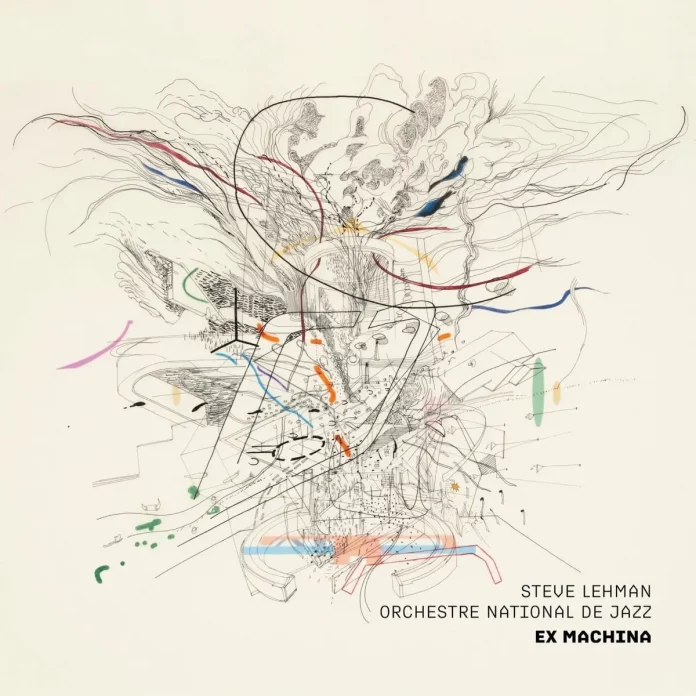Ex Machina originated when composer-improvisers Steve Lehman and Frédéric Maurin met after a 2016 Paris performance by Lehman’s octet. Both wanted to integrate the approach of spectralist composers into their work, and when Maurin became director of Orchestre National de Jazz in 2018, he commissioned Lehman to collaborate.
“Spectrality” is a late 20th century compositional approach that involves seeking the “deep structure of sound”, revealed in its harmonic spectrum. Western composition has traditionally spoken the language of tones, defined through melody, harmony and rhythm – leaving the inner nature of sound unexplored. It’s this conception which the radical avant-gardists of spectralism challenge. For them, a single sound is also a resonant acoustic complex.
The moniker “Ex Machina” evokes spectralist master Gérard Grisey’s Tempus Ex Machina. The work premiered at the 2022 Festival Présences in Paris, which centered on Grisey’s fellow-spectralist Tristan Murail – Lehman’s teacher at Columbia, 2006–2012. It was studio-recorded in concert-style conditions, and features six shorter compositions by Lehman and three extended ones by Maurin. The project embeds generative and interactive electronics into the traditional jazz orchestra – soloists from Orchestre National de Jazz interact with AI software developed by IRCAM’s Jérôme Nika, adding rhythmic complexity and timbral nuance. Note Chris Dingman’s vibraphone solo at the start of Lehman’s Chimera, and the solo sax that begins Lehman’s Ode To akLaff.
Lehman’s Jeux D’Anches is a more conventionally jazz big-band track. Spectral progressions appear in Maurin’s 39 and Le Seuil, and Lehman’s Alchimie – a dazzling creation – and Les Treize Soleils. Maurin draws from Grisey’s early models in his two-part Speed-Freeze, where a largo interpolated with faster sections in changing metres periodically freezes. Lehman’s Los Angeles Imaginary mixes acoustic and electronic in complex dissonances, metrically out-of-kilter. Vibraphone tuned a quarter-tone high is paired with a normally tuned instrument in Maurin’s three works. Rhythmic and metric complexity are central, as in the constantly shifting time signatures on Ode To AkLaff.
Like many albums on Pi, this is a thoughtful release that demands repeated listening. The results are muscular in the manner of contemporary French jazz, and the timbral effects in particular, many of them electronically modified, are enthralling. Not many jazz musicians have an understanding of spectralism, and the collaboration here is remarkable. I’m reminded of Steve Lehman’s debt to Steve Coleman – but Lehman is an original artist in his own right.
Discography
39; Los Angeles Imaginary; Chimera; Alchimie (Steve Lehman); Ode To Aklaff (Steve Lehman); Jeux D’Anches; Les Treize Soleils; Speed-Freeze (Part 1); Speed-Freeze (Part 2); Le Seuil (Part 1); Le Seuil (Part 2) (71.11)
Personnel includes Steve Lehman (as, elec); Jonathan Finlayson (t); Chris Dingman (vib); Jérôme Nika (generative elec); Frédéric Maurin (direction, elec). Ludwigsburg, Germany, 23-26 January 2023.
Pi Recordings Pi99















